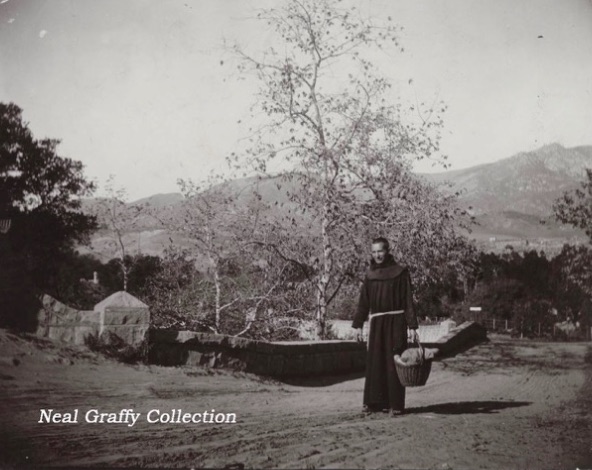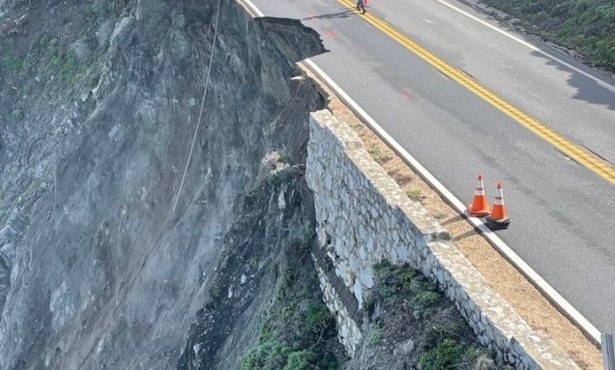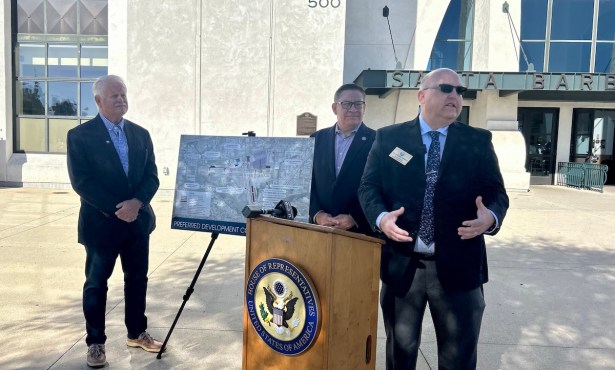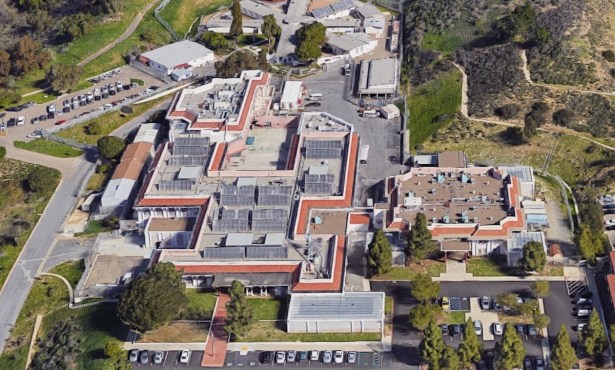Could Four Old Sycamores Save Mission Canyon Bridge?
Group Against Demolition Nominates Adjacent Trees as Historic Landmarks

In a bold and creative gambit to save the 130-year-old Mission Canyon Bridge from demolition, a group of neighborhood residents is nominating as historic landmarks four adjacent sycamore trees that would likely be removed during the construction.
The mature trees ― two on the east side of the bridge, and two on the left ― are between 45 and 65 feet tall and three to four feet in diameter. Based on physical inspections and comparisons to photographs of the early days of nearby Old Mission Santa Barbara, an arborist estimated they are approximately a century old.
Not only are the four trees the most significant and established trees abutting the bridge, the Coalition to Preserve Mission Canyon argues in their application, they are “character-defining” features of the Mission Canyon corridor; culturally significant to the Chumash, who occupied a nearby village and used sycamores to craft cookware; and important parts of the creek’s sensitive riparian habitat.
“This area has evolved naturally for the last 200 years,” said Coalition chair and lifelong canyon resident Lanny Ebenstein in reference to what the group calls its “unique rural ambiance” that would be lost if the corridor were to be redesigned and reconstructed in the name of traffic flow and safety, as city planners and an opposing camp of advocates is proposing. “We need to get into the attitude of saving and preserving instead of demolishing and replacing,” Ebenstein said.
As opposed to widening and rebuilding the bridge at a cost of at least $11 million in grant money ― 10-15 percent of which the city would need to cover ― the Coalition is suggesting Santa Barbara spend a fraction of that amount on low-impact improvements, such as paving, signage, and restriping, to address what it admits are needed updates to the roadway infrastructure. They say the work could be done for around $100,000 without sacrificing the route’s scenery and natural landscape.
The Coalition also takes issue with the suggestion that the area is patently dangerous for motorists, bicyclists, and pedestrians. Collision data doesn’t back up that claim, they say, and the driving force behind the bridge replacement is a perceived ― not actual ― lack of safety. The current configuration and relative narrowness of the roadway forces users to pay attention and slow down, which is a good thing, they say. Widening the bridge would increase speeds and risks.
Moreover, the Coalition argues, the low-end rating Caltrans has given the bridge ― 52 out of 100 ― is not based solely on its structural integrity. The figure takes into account its “functional obsolescence,” meaning it doesn’t technically meet modern roadway standards for turning radii and approach alignments but remains a viable structure. The actual physical issues of the bridge ― rust on the supports, a hole in the underside concrete ― can and should be addressed without tearing the whole thing down, they insist.
During a press conference this Tuesday in front of Rocky Nook Park — during which a passing walker and a biker separately raised their fists and shouted their support to “save the bridge!” — Coalition member and former county supervisor Frank Frost recalled an adage he and his colleagues often used on the dais. “If it ain’t broke, don’t fix it,” he said. “That saved us a lot of money.”
Support the Santa Barbara Independent through a long-term or a single contribution.



